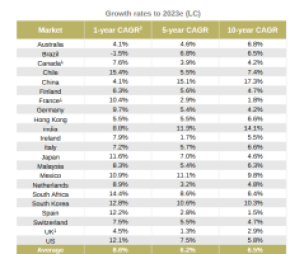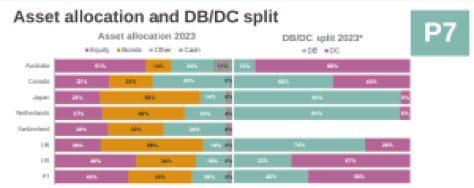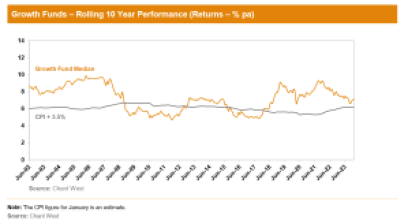Australia’s superannuation system is unique and successful globally


High exposures to equities are delivering Australia top super performance. Photo: Getty
Australia’s superannuation system is unique among its peers in the developed world, and that difference is paying big dividends to workers and retirees.
A report from the Thinking Ahead Institute shows that Australia has 51 per cent of its superannuation assets in equities while the average among the top seven developed nation pension systems is 42 per cent and the nearest to Australia, the US, has 46 per cent in equities.
As the chart above from the report shows, Australia is unique in another way. It has 88 per cent of its superannuation in defined contribution schemes compared to 58 per cent for the average of its peers.
Indeed, if the US is left out, all other top seven members have the majority of funds in defined benefit schemes. Defined benefit schemes promise members a guaranteed payout on retirement and as a result, depend more on bonds as investments, which have lower average returns than shares.
“Australian governments closed down defined benefit schemes because they leave the employer carrying the risk, while defined contribution schemes leave the risk with members,” said Alex Dunnin, research director with Rainmaker.
While that leaves super fund members exposed to share market fluctuations, over time equities have performed better than more conservative defined benefit funds internationally.
The returns for Australia’s super system have been at the top of their peers over time. Thinking Ahead found that Australian pension schemes had returned an average of 6.8 per cent annually in local currency over 10 years, as the chart below shows.
The nearest similar system, the US, returned 5.8 per cent in that time. The Netherlands, which has one of the largest systems globally for its size, returned 4.8 per cent.
The move towards 12 per cent of wages and salaries going into super has also boosted the relative size of super assets to GDP. Again, Australia scooped the growth pool with super assets as a per cent of GDP, climbing 36.8 per cent in the 10 years to 2023.
Back in 2013 super assets were the equivalent of 108.3 per cent of GDP. At the end of 2023 they were estimated to be the equivalent of 145 per cent of GDP, with only Canada, the Netherlands and Switzerland with higher per centage figures.
That growth in super savings meant “Australia has become an important global investor – that’s a significant change to the national accounts,” Dunnin said.
The growth in super investments offshore has meant that since 2014 Australia has owned more of the world’s assets than the world owns of Australia.
That means along with minerals, uni degrees and outback holidays, we now export investment capital, which delivers us a growing stream of interest and dividend income.
“Overall that means the superannuation system has been extremely successful and in the future will deliver $1 million plus retirement balances as the system matures,” Dunnin said.
Lots of big hitters
In an earlier report produced in September 2023 Thinking Ahead found that Australia had six funds in the top 100 international pension tables. AustralianSuper, with $US176.4 billion ($A271.05 billion) in at number 18. Number 21 was Australian Retirement Trust and the Future Fund came in at number 26.
Overall, Australia was the home of 4.9 per cent of pension assets among the top 300 global pension funds and 16 of our super funds were in the top 300.
Australian super funds continued their strong performance in recent times with the average balanced/growth fund with between 61 and 80 per cent in growth assets returning 1 per cent in January. That came on top of a 9.9 per cent return in 2023, according to Chant West.
“Despite the positive January return, optimism was somewhat dampened towards the end of the month, with higher-than-expected inflation numbers in the US and the Federal Reserve signalling that interest rate cuts may not be as imminent as hoped,” said Chant West research lead Mano Mohankumar.
The performance of funds in recent times represents another demonstration of the value of Australia’s high exposure to equities in superannuation.
“The end of January marks exactly four years since the pre-COVID high reached in 2020. Despite the challenging backdrop of market volatility over that period, the median growth fund is up nearly 23 per cent, so members who have remained patient and resisted the temptation to switch to a more conservative option have been well-rewarded,” Mohankumar said.
“Even more importantly, super funds are continuing to meet their long-term return and risk objectives,” Mohankumar observed.
The New Daily is owned by Industry Super Holdings










